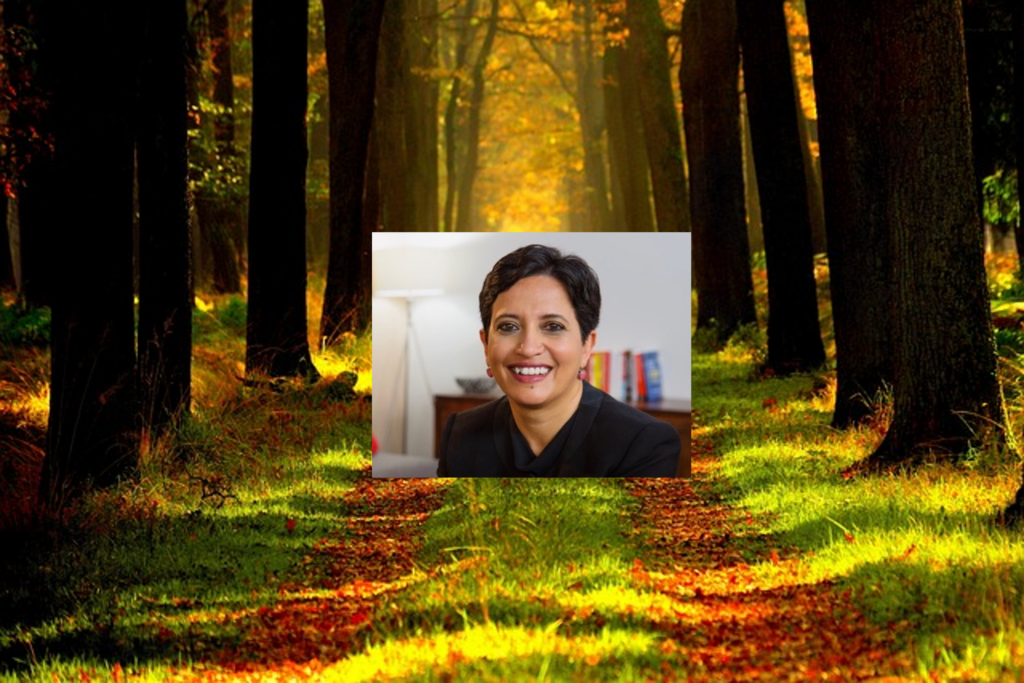Entrepreneur Journeys
The Startup Velocity Question: What Hinders Acceleration in VC Funded Companies?

I have been running 1Mby1M since 2010. I find myself saying to entrepreneurs ad nauseam that VCs want to invest in startups that can go from zero to $100 million in revenue in 5 to 7 years.
Startups that do not have what it takes to achieve velocity should not be venture funded.
Experienced VCs, over time, have developed heuristics to gauge what constitutes a high growth venture investment thesis.
>>>1Mby1M Udemy Courses with Sramana Mitra: Bootstrapping

Over the course of two years, we have released over 70 courses on Udemy with the aim to democratize entrepreneurship education at scale globally. This series of posts aims to help you find the one you need easily and provide you with discount coupons.
>>>Bootstrapping with a Paycheck: Axosoft CEO Hamid Shojaee (Part 1)
If you haven’t already, please study our Bootstrapping Course and Investor Introductions page.
Bootstrapping using a paycheck is a real trend. Here’s one more case study!
Sramana Mitra: Hamid, tell us a bit about yourself. Where were you born and raised and in what kind of background?
Hamid Shojaee: I was born and raised in Iran. I was 10 years old when we moved to the United States.
Sramana Mitra: What time frame was this?
Hamid Shojaee: I was born in 1973. I was there until about the end of 1983.
Featured Videos
Can 1M/1M Help Me Raise Money?
How Does 1M/1M Democratize Entrepreneurship Education?
How Does 1M/1M Democratize Management Consulting?
When Is The Right Time To Join 1M/1M?
Can 1M/1M Help Me With Business Development?
Can 1M/1M Help Me With Market Sizing?
Can 1M/1M Help Me Validate My Product?
Will I Have Private 1-on-1 Sessions In 1M/1M?
How Does 1M/1M Help Entrepreneurs Connect With Silicon Valley?
Mentoring or Consulting?
Why Does 1M/1M Charge $1000 a Year?
Why Does 1M/1M Partner With Local Organizations?
Why Don\’t Mentoring Networks Work?
Why Is It Important To Study With 1M/1M Now?
Dan Stewart Story
Vikrant Mathur Story
Black Entrepreneur in North Carolina Says No Bias: Rod Brown, COO of OnceLogix (Part 1)
If you haven’t already, please study our Bootstrapping Course and Investor Introductions page.
We constantly hear from pundits that specific demographic groups face bias in the industry. Rod Brown works with a team of black entrepreneurs in North Carolina, and has a refreshingly positive attitude with which they’re building OnceLogix. His simple message: ‘Solve problems.’
Sramana: Rob, tell us where you are from and what your background is. What is the backstory to your entrepreneurial journey?
Rod Brown: I am from a small town in North Carolina. I went to school at Winston-Salem State University. My background is in financial services. I was in banking for many years before I became an entrepreneur. I worked for a Fortune 500 bank and did Banking Operations for 10 years before I jumped the fence and started doing financial management. I became a licensed financial advisor for sales, stocks, and bonds. I was basically a money manager. >>>
Bootstrapping with a Paycheck: DefinitiveDeals Founder Mattias Larson (Part 1)
If you haven’t already, please study our Bootstrapping Course and Investor Introductions page.
We’re seeing a clear trend towards bootstrapping digital startups while holding onto a full-time job. Mattias Larson has a simple but powerful story to tell.
Sramana Mitra: Mattias, tell us about you. Where did your journey begin and in what kind of background?
Mattias Larson: I was born in the northern part of Sweden – actually, not that far away from the Arctic Circle – in a small town with a population of maybe 40,000. I grew up there and I went to college in a nearby town. I graduated with a master’s degree in Computer Science and International Marketing.
Building a Healthcare IT Company to $100 Million: Dr. Rob Langdon, Co-Founder of T-System (Part 1)
If you haven’t already, please study our Bootstrapping Course and Investor Introductions page.
A technology company that first built a $30 million business selling a paper product? You got to be kidding! No, I am not. Read T-System’s story doing just that!
Sramana Mitra: Rob, let’s start with the beginning of your personal journey. Where are you from? Where did you grow up and in what kind of background?
Rob Langdon: I was born and raised in Canada. I’m still Canadian although I’m a US resident. I initially attended Engineering School – Electrical Engineering – after being fascinated my whole life with technology, electronics, and music. During the course of my studies, I was somewhat disillusioned with Electrical Engineering – that was in the 70s – because Electrical Engineering at >>>
Building a Silicon Valley Style Company from Australia: ROKT CEO Bruce Buchanan (Part 1)
If you haven’t already, please study our Bootstrapping Course and Investor Introductions page.
We don’t hear of cutting edge technology ventures out of Australia succeeding in the marketplace. ROKT is a rare gem, and a fascinating story!
Sramana: Bruce, where are you from? What kind of background do you come from?
Bruce Buchanan: I was born in Sydney. My background is a bit unique. My mother was British and my father was American. I spent quite a bit of time traveling to different places. My two grandfathers were stationed in Australia during World War II. After the war each one of my grandfather’s brought their families to Australia.
I spent a couple of years in the UK going to school and I spent a year of school in the US during junior high. I did my MBA at UCLA and I also worked for BCG in Boston. I have worked in the US and the UK as well, but I am predominantly an Australian. >>>
Scaling a Fat Startup: MongoDB CEO Max Schireson (Part 1)
If you haven’t already, please study our Bootstrapping Course and Investor Introductions page.
The technology startup market is red hot in 2014, and private company valuations have sky-rocketed. MongoDB has raised over $200 million, and is trying to disrupt the Database market. The company they see most often in deals is Oracle. A very interesting case study of a company with huge ambition.
Sramana: Max, let’s start at the beginning of your story. Where are you from and what were the circumstances of your upbringing?
Max Schireson: I was born and raised in Canada until I was 7. My parents were hippies living in a commune and I spent the first year of my life in a tent. I lived in Boston from the time I was 7 until I was 12. Since then, I have been in the Bay area most of the time although I did spend a second stint in Boston while my wife was finishing medical school. >>>
Thought Leaders in Online Education: Ray Martinez, Chancellor of WGU Texas (Part 1)
If you haven’t already, please study our Bootstrapping Course and Investor Introductions page.
Adult education is becoming more of an issue. Competency-based learning that ties into employment directly is necessary to mitigate the unemployment problems in America and elsewhere. WGU has an interesting model.
Sramana Mitra: Ray, let’s start by giving our audience a little bit of background about you as well as your institution.
Ray Martinez: My name is Ray Martinez. I’m the Chancellor of Western Governors University (WGU) Texas. We go by WGU Texas. I have worked primarily in higher education policy over the last seven years. I’ve worked in various aspects of public policy either at the federal or state level for most of my career over the last 25 years or so. >>>
Bootstrapping to $20 Million in Charleston, South Carolina: eGroup CEO Mike Carter (Part 1)
If you haven’t already, please study our Bootstrapping Course and Investor Introductions page.
Continuing our coverage of entrepreneurship far away from Silicon Valley, we bring you a conversation with Mike Carter, CEO of eGroup in Charleston, South Carolina. Typically, these environments have bred bootstrapped companies, and bootstrapping using services continues to be a popular method. Of late, incubators and accelerators are also cropping up, and building a more sophisticated ecosystem.
Sramana Mitra: Mike, let’s start with the beginning of your story. Where are you from? Where were you born and raised? What kind of circumstances leads up to the entrepreneurial story? >>>
Canadian Real Time Big Data Company’s Excellent Thought Leadership: Terapeak CEO Kevin North (Part 1)
If you haven’t already, please study our Bootstrapping Course and Investor Introductions page.
We cover Big Data at length, both on Thought Leaders in Big Data and Entrepreneur Journeys. This story relates the tale of robust execution on a very insightful concept, delivering a real-time Big Data solution to merchants transacting on marketplaces like eBay.
Sramana: Kevin, let’s start at the beginning of your story. Where are you from and what kind of backstory leads up to Terapeak?
Kevin North: I was born and raised in Toronto and had a typical middle class upbringing. My father worked for the railroad. In high school, I became interested in computers. I was 14 and 15 years old when I started taking apart computers and rebuilding them. I learned how to program. >>>
Ultra-Light Startup to $20 Million in Revenue: WatchUWant CEO OJ Whatley (Part 1)
If you haven’t already, please study our Bootstrapping Course and Investor Introductions page.
OJ Whatley did $6 million in revenue in 2006 from his home, with ‘me, myself, and I.’ Further elaborating on the ultra-light startup trend, we bring you his story of approaching $20 million with 20 employees.
Sramana Mitra: Let’s start at the beginning of your story. Where are you from? Where did you grow up and in what kind of background?
OJ Whatley: I was raised in Chicago. My father was a commodities trader. That’s where I got in my blood the idea of buying low and selling high – the idea of speculation and entrepreneurship.
Sramana Mitra: Entrepreneurship and speculation are not the same things.
